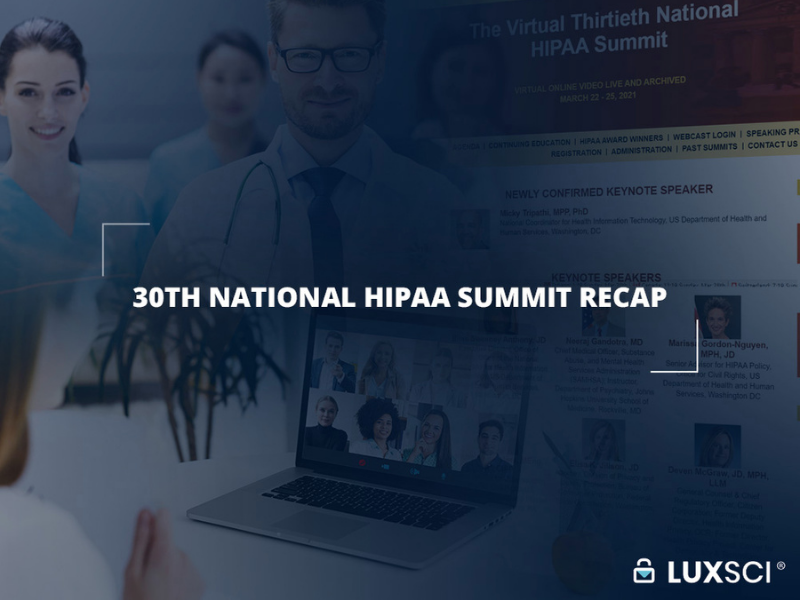2021 Year in Review
Tuesday, December 21st, 2021As the year draws to a close, it’s a good time to take a look back. In this 2021 Year in Review, we analyze the most important developments in cybersecurity, as well as the major information security threats.
2021 Year In Review: The Impact Of Coronavirus
As we entered year two of the coronavirus pandemic, we are still dealing with the fallout. The work-from-home model spurred on by COVID-19 presented a significant shift for the workplace and the way we use technology. The emergence of the Delta and Omicron variants wreaked havoc with plans to return to the office. As a result, many roles permanently shifted to full-time remote work. Still, other companies returned to the office and are managing a hybrid model. There are far more work-from-home opportunities than were available in the pre-pandemic world.
This has significantly altered the threat landscape. Organizations need to acknowledge that remote work is here to stay. As a result, they should update their security plans and invest in the equipment needed to enable secure remote work.
In addition, there have been a host of COVID-19-related threats that we have had to remain vigilant against. These have ranged from fake COVID-19 medication websites that suck up sensitive data, to malware loaders that use pandemic-related topics as a smokescreen. The most effective threats often utilize social engineering and the anxiety caused by COVID-19 is a benefit to cybercriminals.
The good news is that these threats seem to be going down, with Trend Micro finding about half the number of COVID-19-related threats in the first half of 2021 as they did in the beginning of 2020. However, this does not mean that overall cyberthreat levels are decreasing. Instead, it’s likely that attackers are simply moving on to other deception techniques.
2021 Year In Review: Ransomware
Trend Micro reported that ransomware detections have halved from 14 million in the first 6 months of 2020, to 7 million between January and June in 2021. However, it doesn’t mean that the threat is going away. The company’s report finds that attackers are adopting a targeted approach that aims for high rewards, as opposed to pursuing as many victims as possible. Indeed, we saw attacks on critical infrastructure this year that garnered national attention. The Colonial Pipeline, JBS Foods, and the Kayesa ransomware attacks were just a few that made headlines in 2021.
Figures from Palo Alto Networks show that ransomware payouts are rising. The average ransomware payment rose from $312,000 in the first six months of 2020 to $570,000 in the first half of 2021. The FBI was able to recover some ransomware payments from cryptocurrency wallets this year, but only in a small fraction of cases.
Trend Micro also noticed an increase in modern ransomware attacks that involve more sophisticated methods of infection. As ransomware threats get more sophisticated, make sure your cybersecurity program is keeping up. Annual reviews, training, and investment in cybersecurity are crucial to keep your business protected.
2021 Year In Review: Zero Trust Architecture
One of the more positive developments in cybersecurity has been the move to Zero Trust Architecture. This approach was spurred on by a government initiative that aimed to boost America’s cyberthreat resilience. The initiative also included plans to modernize the federal cybersecurity environment.
Under the plan, each agency head was required to develop plans for implementing Zero Trust Architecture according to guidelines set out by the National Institute of Standards and Technology (NIST). The government is continuing to invest more in cybersecurity as a part of America’s national defense. It’s likely we will see increased funding for such initiatives in 2022.
Zero Trust Architecture quickly caught on across all industries. It is an approach that assumes an organization’s own network is not safe from cyberthreats. This security model accepts that attackers may already be inside the network and involves creating trust zones of access which are as small as possible. The approach reduces the potential impacts of an attack. Limited trust zones prevent bad actors from accessing all of a network’s systems and data.
Stay Safe in the Future With LuxSci
The last 12 months have brought a lot of changes to the cyber landscape. One thing that always stays consistent is the tenacity of attackers in coming up with new ways to circumvent cyberdefenses.
Amid our ever-changing tech environment and the constant wave of novel attacks, the only way for companies to effectively defend themselves is with a cybersecurity partner like LuxSci. Contact us now to find out how our services can help to protect your organization from threats in 2022 and beyond.






